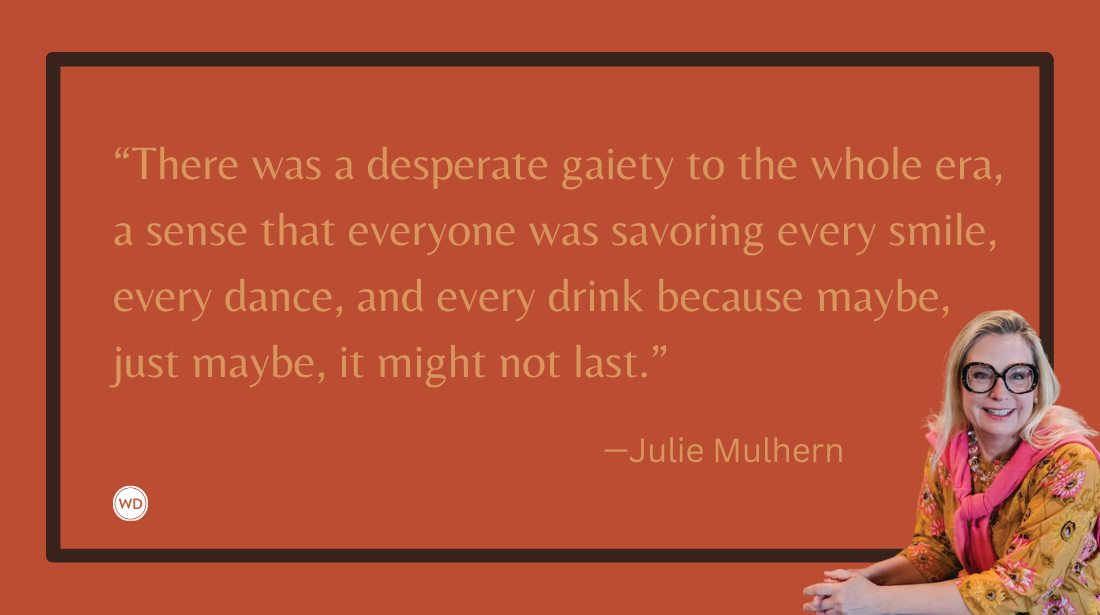FightWrite™: Knife Fights, Part 2
In the last of this two-part answer, author and trained fighter Carla Hoch explains the physical mechanics behind a knife fight and provides useful tips for your next project.
In our last FightWrite™ post, I fielded this question from writer Brenda Carroll:
Knife fights. As someone who knows nothing, how do they work? It is a fight at all or just an attack? Defense options? What do novices need to know first? What do experts know that the rest of us don’t? Most pressing medical concerns? What can be handled with first aid and what requires the ER?
These are hearty questions with answers long enough to fill a book. I began answering them in the last post by explaining a few basics about knives. This go around, I will focus more on the action. For each of these, I have more extensive posts on my FightWrite™.net blog and chapters in my WD book, Fight Write: How to Write Believable Fight Scenes.
Attack vs Fight
First, let’s differentiate a knife attack and a knife fight. Knife attacks are fast and unexpected. They can look as benign as one person bumping into another. And, as strange as it sounds, the victim may not even know they are one. I have interviewed people who had no idea they had been stabbed until they felt the wetness of blood. Others said they thought they had been burned. Some absolutely knew what had taken place. So, any of these scenarios are realistic for your assailed character.
A knife fight is between armed combatants and is likely not as quick as an assault. And a knife fight between professionals will look different than one between untrained wielders. If either fighter is under the influence of alcohol or drugs, the altercation will be more different still. We are not going to take the latter into account because there are too many variables.
In the cases of both trained and untrained fighters, physical distance between combatants in a knife fight is greater than in a knife attack. There also may be a moment of squaring off. From there, the fight is much different. One thing, however, remains the same. When a knife comes out, the implications are mortal.
Unskilled Fighters
Unskilled fighters can be more frenzied. There may be a lot of unproductive movement, wild slashes, and random stabs. There may be more defensive wounds on the hands and undersides of the arms. And there may be more wounds in general than would be between skilled fighters. They may move forward and backward and side to side and when a knife is dropped, they look at it.
Skilled Fighters
Skilled fighters move methodically. They use the movements of their opponent to their advantage. If their combatant rushes in, the methodical fighter may simply sidestep and strike as their opponent passes. Skilled fighters also circle rather than move in a straight line. When you circle, you don’t run out of road and you can move perpetually to the opponent’s empty hand. If a blade drops, the trained fighter never looks down at it. In the split second that they look away, their opponent may pull a second blade. Instead, the skilled fighter keeps an eye on their combatant, and, if possible, walks to the dropped blade and puts a foot on it. They can kick it away but someone else could come along and pick it up or their opponent could run for it. With a foot on it, the skilled fighter always knows where that knife is.
Skilled fighters know vital targets. They know where major arteries and vital organs are located. They know what strikes kill eventually and which drop a fighter quickly. They also know how to access those targets. A skilled fighter probably won’t slash a chest to target the heart unless their blade is substantial enough to slice through ribs. Instead, they would stab to break or move the ribs to access the heart. Or they may forgo the heart and target the abdominal aorta that sits unguarded at the top of the abdomen at the meeting of the ribs. In my book, I have a circulatory map to help you envision productive strike points.
IndieBound | Bookshop | Amazon
[WD uses affiliate links.]
Skilled fighters know how to open targets. If their opponent is guarding their vital targets well, the skilled fighter will strike at less vital areas to make the defender move. That movement may cause the defender to open vital strike points. In other words, I may slash at your face to make you lean back. When you lean back you will have to either put your arms out in front of you or step back to maintain balance. The first leaves the arms and abdomen open. The step leaves the femoral artery vulnerable.
Skilled fighters defend with the tops of the arms. The tops of the arms aren’t as veiny and ligament rich as the underside. Yes, they bleed, but not likely enough to be dangerous. Sometimes skilled fighters defend by redirection. They do a wiping motion with their arm that generally directs the strike to the outside of the body. Sometimes they block. How much they do either will depend on their training style.
Skilled fighters don’t just rely on their blade. They punch, head butt, throw knees and kick as well. Although, kicking isn’t as common as it can disrupt balance, leaves the fighter open to being swept and the femoral artery open. Skilled fighters use every bit of their body when they fight.
Skilled fighters see the fight coming. They know physical cues of an impending attack. If a person takes a solid, fighting stance, skilled fighters take a defensive posture. They also watch how people hold their bodies. They notice if someone is standing sideways, obscuring one side of their person. They see when someone is keeping a hand hidden up their sleeve, under their shirt, or in their pocket.
Skilled fighters know a person is deadly until they are dead. I have read reports of people with fatal knife wounds to the heart running as much as ten yards before dropping. During that time, they can strike.
What you don’t see in the movies
Real knife fights generally aren’t loud. There’s little if any metallic ring. Also, when blades come out, it’s not often anybody walks away clean. I was taught to expect to get to cut. Period. Knife fights also don’t generally last as long as the screen would have you believe. The cinema adds a cinematic quality to the fight, which is to be expected.
I wish I could keep going. But, I gots to stay in my word count here. To help you further, here are some links to relevant posts in my blog:
- Cues of Attack
- Headbutting
- Interview with Edged Weapons Expert
- Knife Sparring
- Knife Vocab & Attack Video
- Perineum Stab
- Redirecting Momentum
- Surviving a Throat Cut
- Blad Damage: What Will Kill
- Wounds by Blades
- Vital Targets
Writers, keep those questions coming. And be sure to check out my class with Writer’s Digest University: What to Consider Before You Write Your Fight Scene. When you subscribe to my blog, you get a discount code for the class. Keep an eye out for more FightWrite™ classes to come both with WDU and the WD conferences. If there is a question you have or a class you would like offered, comment on this post or send it directly to me through my blog contact form.
Until the next round with FightWrite™, get blood on your pages.
Want your question answered in the next FightWriteTM post? Comment below!
If you wish to comment on the site, go to Disqus to create a free new account, verify your account on this site below (one-time thing), and then comment away.
Carla Hoch is the award-winning blogger of FightWrite® and author of the Writer’s Digest book Fight Write: How to Write Believable Fight Scenes. She is a WDU instructor who regularly teaches on the craft of writing fight scenes, action, and violence as well as the mechanics of fighting for writers. Carla is a world champion jiujitsu player and has experience in almost a dozen fighting styles. She lives and trains outside Houston, Texas.









